- Home
- Simon Winchester
Korea: A Walk Through the Land of Miracles Page 4
Korea: A Walk Through the Land of Miracles Read online
Page 4
During all those long hours I tried, so far as I recall, to clear my mind of most of the prejudice against Korea, the views instilled in the Gaumonts and the classrooms of old. To an extent I must have succeeded, difficult as it may have been. In any event the conversion, for that is what I underwent during the two weeks that followed, was positively Pauline in its scale and extent. I became, without a doubt, and with extraordinary suddenness, enchanted by what I found.
All the old images suddenly melted and slipped clear away. I became captivated by Korea and the Koreans, and have remained so ever since. I hope that these pages that follow will convey some of the reasons why—reasons that remain, and may remain long after this book is written, a mystery to me. The reader will not want a litany of excuses, of course: but I sometimes find my affection for poor old Korea—this ‘unhappy country’ that so many earlier writers, half a century and more ago, discovered it to be, this ‘difficult and dangerous Kingdom’ that Hendrick Hamel found three centuries before—sometimes I find it hard to explain, even to myself. Hence the journey, and the need to try to understand both Korea and my own reactions to Korea. The journey that I planned, then, and the words that result from it, will serve me every bit as much as I trust they may serve the reader. For, like all travels, this is as much a journey of self-discovery as the simple discovery of another country and another people. I needed to make the trip—to find out not simply what, and who, and when, but why.
For several months I contemplated the best way to journey around the country. I had already driven and flown and taken the railway and the bus over many hundreds or even thousands of miles. Each was pleasant enough a mode of transport, yet each placed strict limits on the kind of Koreans one was able to meet. In a car, of course, you had either your companion or the very occasional hitchhikers—invariably students or drunks or American servicemen eager to get back before their two-day passes expired. The planes, on the other hand, tended to fill with blue-suited businessmen from Hyundai or Gold Star or Daewoo, men who would either read impenetrable documents about the finer points of oil tanker hull assembly or else, and more frequently, test their English on you in sometimes the most excruciating ways.
I once encountered a Mr Jimmy Kim (as his card declared) on a flight to Ulsan: he approached me in the airport lounge and, with neither introductions or queries, announced his apparently rather urgent inquiry. Was the word slipper, he asked, generally used in the singular or the plural form? I thought for a moment and then replied that people normally asked for the dog or child to fetch slippers in pairs, at which news Mr Kim suddenly looked crestfallen. I asked him why. He was, he explained sadly, the publisher of a series of English conversation books, and he had just sent his latest masterpiece to press containing a sentence that read: ‘Mrs Park, would you please fetch me my slipper?’ I suggested that one might well explain away the odd construction by saying that Mr Park had only one leg or that the dog had savaged the other shoe, whereupon Mr Kim brightened a little. He then asked for reassurance that another of his sentences was correct. Garlic and sugar, he wondered, they were usually used in the plural, were they not, as in ‘There are quite a lot of garlics in that soup, Mrs Lee’?
In the end I decided to walk.
I was not accustomed to walking, nor was I very fit. But it was a means of journeying born of a noble tradition: Belloc and Byron and Laurie Lee and Patrick Leigh Fermor had all walked, and none of them, so far as I could learn from their accounts, had previously been renowned for athleticism nor belonged to any rambling club. Providing I had enough warm clothing, stout boots, and enough money to buy dinner and a bed at an inn each night, the journey could be nothing less than pleasurable. I would see the Korean people at ground level; I could linger where I wanted, go where I wished, stop and start at moments convenient only to myself. I mentioned the idea to friends at home, and they scoffed amiably. I mentioned it to Koreans, who took the Confucian view that to journey long distances alone was highly disagreeable and an almost unhealthy practice. But the more I considered it, the more the idea appealed. The only matters remaining, after buying boots, a rucksack, and an ample supply of adhesive bandage and Kendal Mint Cake, were to choose a route and select a date on which to begin. History provided me with a perfect design.
Korean history is a mysterious subject and like many Eastern histories is as much a mixture of legend and hyperbole as of documented fact. If it is uncertain when the West first became officially aware of Korea’s existence, it is by no means clear when and how Koreans first came to know of the existence of the strange-smelling, pale-skinned ghosts—the yangnom—who lived in the vast world beyond the sunset. China, Japan, and Mongolia formed the essential boundaries of Korean geographical knowledge until as late as the sixteenth century; and after two successive and brutal invasions and sieges by the Manchus, the Koreans withdrew into themselves so decisively and effectively that they referred to their land as the Hermit Kingdom, a country deliberately shunning contact with the outside Oriental world and having virtually no conception of another world in the Occident.
But Roman coins have been found in Korean burial urns, suggesting that traders must have reached Korean shores, bringing at least some form of contact with the Mediterranean civilizations. And the tentative contacts made with the West by the Chinese offered some later links between the Koreans—who sent peacetime envoys to the Peking court—and the cultures of London and Paris and Venice and Madrid. Korean writings of the early sixteenth century refer to people called the ‘Fo-lang-chi’ overrunning the Chinese tributary state of ‘Man-la’—the Portuguese, undoubtedly, who annexed Malacca. A Spaniard, Gregorio de Cespedes, actually served in Korea as chaplain to Hideyoshi’s troops during the Japanese campaign of 1593, but no reference can be found in any Korean source to the appearance of this strange-looking barbarian.
It was some time towards the end of the reign of King Sonjo, around 1606, that a Korean diplomat returned to Seoul from Peking with a map of Europe, offering the first certain, and presumably dismaying, knowledge that there was an advanced and civilized world beyond the great tracts of China. Then again, in 1631 an envoy named Chong Tu-won returned from a mission to the Celestial Kingdom with a collection of Western objects—a musket, a telescope, an alarm clock, a map of the then-known world, and books on astronomy. Thirteen years later still, when the Korean prince Sohyon was taken hostage by the invading Manchus and brought back to China, he met and was befriended by the Jesuit astronomer and mathematician, Adam Schall von Bell, and on his release in 1644 he brought back a number of books on Western science and a posse of Christian servants. (However, Sohyon died mysteriously, possibly of poisoning, just two months after his return to Seoul. It has long been thought that his enthusiasm for Schall’s teachings, his pride in the books and presents he had been given, and his friendship with his Christian butlers proved offensive to the strict Confucian orthodoxy of his royal colleagues. In any case, such influence as he might have brought with him evaporated like perfume on a stove, and once his servants had been deported back to Peking, it was as though Sohyon, and Schall, had never been.)
But inexorably, events began to move more rapidly. A Dutch sailor named Jan Weltevree was shipwrecked on the Korean coast in 1627 and became a subject of immediate official fascination. In line with the policies of Japan and Korea, he was told he would have to remain exiled on the peninsula and could never return home. Weltevree, a master foundryman, was inducted into the Korean Military Training Command, and spent his career teaching military gunsmiths how to cast cannon, European-style. In such ways—imprisonment and exiledom, diplomacy and wreck—did knowledge seep slowly into this most perversely isolated of states on the Pacific shores.
But then, in 1653, came an event that was to bring Korea firmly to the notice of the Western world, though in truth it must be said it did little to increase Korean enthusiasm for or interest in the West.
The story of the wreck of the Dutch merchant ship the Sparrowhawk on the southw
estern shores of Cheju Island, and the subsequent adventures of the surviving crew, was something I came across while browsing in a bookshop in the centre of Seoul one wet and dismal November evening. It took me but a few moments to realize that the journey of these Dutch sailors, for reasons both symbolic and practical, would provide the perfect template for my own odyssey through Korea nearly three-and-a-half centuries later.
The Sparrowhawk, or more precisely, the Sperwer, was a three-masted barque in the service of the Netherlands East India Company. Her crew had come out from Texel in Holland in January 1653 and had arrived at the Dutch naval station in Batavia—today’s Djakarta—and then sailed on to Taiwan. There they transferred to the tiny Sparrowhawk, with orders to proceed to the treaty port of Nagasaki, in Japan, where the Dutch had trading rights.
According to the now-famous account of the journey written by the ship’s secretary, Hendrick Hamel (with whose words I have begun this and all other chapters), the vessel set course to the northeast on 30 July. The bill of lading, issued in Formosa, shows the vessel to have carried the kind of exotic cargo that would have delighted Masefield: 20,000 catties (the measurement is still commonly used in China; a catty is equivalent to about 1.3 Ibs) of putchuk (better known as costus-root, a gingerlike aromatic root much favoured by the Japanese); the same amount of camphor (listed, oddly, as Borneo camphor—odd since most of the world’s camphor came in those days from a species of cinnamon tree grown in Taiwan, whence the Sparrowhawk sailed); 20,000 catties of alum; 92,000 catties of powdered sugar; 300 wild goat skins; 3,000 eland skins; and nearly 20,000 Taiwanese deerskins.
Captain Egberts, of Amsterdam, was at the helm as the boat set sail. And Hamel wrote: ‘The day held fair towards the Evening, when, as we were getting out of the Channel of Formosa, there arose a Storm, which increas’d all night.’
It was a bad start to a journey that ended in catastrophe. The East India Company might well have expected it. July and August are, after all, the worst months for typhoons in the northwestern Pacific (remember the old mariners’ adage: ‘June, too soon; July, stand by; August, if you must; September, remember; October, all over’), and modern mariners might have construed it as foolhardiness on a grand scale to send a heavily laden sailing vessel across the East China Sea in August. Nevertheless, the company directors confidently expected their charge to make fast on Deshima Island, off Nagasaki, by the end of September at the latest. But she never did arrive, nor did she ever return to Taiwan. The Sparrowhawk and her crew of sixty-four men simply vanished. The company waited for more than a year, hoping against hope for some sign; but then, in October 1654, a brief announcement in the East India Company bulletin recorded the loss of the vessel. The cargo and crew, with expressions more of inevitability than sorrow, were written off.
Twelve years later, however, in September 1666, a message was received at the Dutch agent’s office in Nagasaki saying that ‘eight Europeans, dressed in a wondrous way and with a boat of strange fashion’ had fetched up on the Goto Islands in southwestern Japan and were being transported to the Japanese authorities at Nagasaki, where the Dutch—the only local Europeans—might see them and try to discern who or what they might be. The meeting must have been an extraordinary event, for the eight men were indeed Dutchmen, some of the surviving party from the Sparrowhawk. Their clothes, their little fishing boat, their newly adopted language, and their eating habits all came from the country in which they had sojourned for thirteen years after their shipwreck and that was only vaguely known to any Europeans—Korea.
Their tale ranks among the most romantic of the innumerable sagas of wreck and faraway adventure, and it has been meticulously recorded by Hendrick Hamel in a book that was published in both Amsterdam and Rotterdam in 1668—a book that presented the first European account of ‘the Kingdom of Corea’.
The Sparrowhawk smashed onto the rocks at night, early in the morning of 16 August 1653:
…when the second Glass of the second watch being just running out, he that look’d out a Head cry’d Land, Land; adding, we were not a Musket-shot from it; the Darkness of the Night and the Rain having obstructed our discovering it sooner. We endeavoured to Anchor, but in vain, because we found no bottom, and the roughness of the Sea and the force of the Wind obstructed. Thus the anchors having no hold, three successive Waves sprang such a leak in the Vessel, that those who were in the Hold were drown’d before they could get out. Some of those that were on the deck leap’d Overboard, and the rest were carried away by the Sea. Fifteen of us got ashore at the same place, for the most part naked and much hurt, and thought at first none had escap’d but ourselves; but climbing the Rocks we heard the Voices of some Men complaining, yet could see nothing, nor help anybody, because of the darkness of the night.
The survivors had no idea where they might be; and when the first curious locals appeared on the clifftop to inspect these cold and frightened newcomers, the natives’ dress suggested they had landed in China. ‘These men were clad after the Chinese fashion, exception only their hats, which were made of horsehair.’ But then, two days later, the matter was clarified. The navigator was able to snatch a hurried sight of the sun and the horizon with his sextant. He pronounced the ship to have stranded not in China at all but at 33° 32' north latitude, 126° 20' east longitude, on an island the Dutch had sighted sufficiently often to have included it on their charts, with the name of Quelpaert, after a type of Dutch sailing vessel that, from a distance, it resembled. Quelpaert, ‘which the natives call Sehesure,’ was known to lie ‘12 or 13 leagues south of the coast of Corea’.
Hendrick Hamel’s account of the next thirteen years, written in a hurry while he was waiting in Nagasaki to be taken back to Batavia, is brief but vivid. He tells of the crew members’ interrogation by the local magistrates on Cheju Island and of the quite astonishing arrival in their midst of another Dutchman—the same Jan Weltevree who had been wrecked some thirty-five years before, had been impressed into the Korean Army, and had fought against the Manchus. Weltevree’s arrival was a piece of marvellous good fortune: he had been sent by the court in Seoul to act as interpreter:
It was very surprising, and even wonderful, that a man of fifty-eight years of age, as he was then, would so forget his Mother-tongue, that we had much to do at first to understand him. But it must be observ’d he recovr’d it again in a month. The Governour [of Cheju] having caus’d all our Depositions to be taken in Form, sent them to Court, and bid us be of good cheer, for we should have an Answer in short time. In the mean while he daily bestow’d new favours on us, insomuch that he gave leave to Weltevree and the Officers that came with him to see us at all times, and acquaint him with our Wants.
The decision of the court was issued within weeks: the entire party was to be brought by ship across the Strait of Cheju to the mainland and then by horse and foot was to be transported north to Seoul. Only then, when the king and his court officials had seen and interrogated the party themselves, would orders for their disposition be made.
It is not necessary at this stage to relate in detail the entire story of this hapless band of stranded seamen—no doubt some mention of them will be made in subsequent chapters. Briefly, they, like Jan Weltevree, were pressed into the service of the army, as musketeers in the Seoul palace guard. They immediately tried to escape by attempting to win over to their cause the ambassador of the Chinese court, but they failed, were punished (feeling for the first time a punishment they had seen meted out to criminals on Cheju, the uniquely painful foot beating known as bastinado, which was performed with particularly efficient unpleasantness by the Koreans), and then exiled to the very southwest of the country. It was from there that eight of them managed, after ten years of waiting, to steal a small fishing boat and set out eastward for Japan.
I read all this on that dark and wet autumn night; Korean bookshops stay open late, mercifully, and the bookseller seemed not to mind my browsing. But I had in any case decided within moments of opening the book on the route
of my walk. I would follow the path that Hamel, Denijszen, Ibocken, Pieterszen, Janszen, and the rest (which included a mysterious Scotsman named Alexander Basket), the first European party to be escorted through the Hermit Kingdom, had taken.
They had left Cheju in June 1654 and had landed at the southern port city of Haenam. From there, horses having been supplied, they trotted comfortably northwards—keeping to an almost die-straight path through the cities that are now called Yongam, Naju, Changsong, Taein, Chonju, Yonsan, Kongju—and finally having crossed ‘a river as wide as the Maese is at Dordrecht’, reached the city their hearing suggested was Sior and that we now know as Seoul. The journey had taken them ten days. One of their number, a gunner ‘who had never enjoy’d high health since our ship-wreck’, died along the way; but otherwise the party arrived without incident before His Highness the King Hyojong, seventeenth monarch of the Yi Dynasty.
The journey I would make, then, would start at the very point on Cheju Island where the Sparrowhawk had stranded. I would cross the island to its capital, Cheju City, where the Dutchmen met Weltevree and were told of the court’s decision to bring them north to Seoul; I would sail across to the mainland and, with compass and stick, set off due north along the track that my fellow Europeans had taken all those years before. I would go to Seoul, of course, but I would then, for the sake of completeness, walk smartly for those last few miles up to the point where South Korea ends and its other half, the implacably hostile neighbour-state of North Korea, begins. More precisely, I would try to finish my journey at the celebrated village where the country finishes—the war-wrecked hamlet of Panmunjom, through which the frontier (or the Military Demarcation Line, to be exact, for this is not a legal frontier, merely a temporary division caused by a war frozen in cease-fire) runs—and from beyond which North Korea glowers menacingly at its neighbour and the outside world.

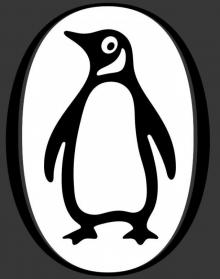 The Surgeon of Crowthorne
The Surgeon of Crowthorne Korea: A Walk Through the Land of Miracles
Korea: A Walk Through the Land of Miracles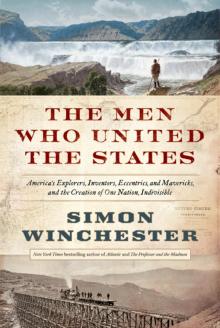 The Men Who United the States: America's Explorers
The Men Who United the States: America's Explorers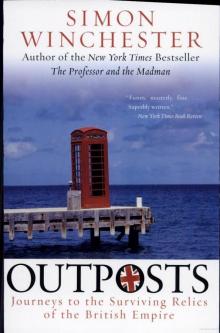 Outposts: Journeys to the Surviving Relics of the British Empire
Outposts: Journeys to the Surviving Relics of the British Empire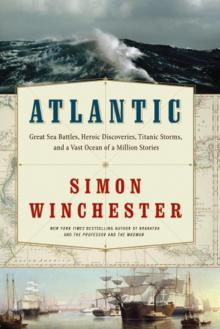 Atlantic: Great Sea Battles, Heroic Discoveries, Titanic Storms
Atlantic: Great Sea Battles, Heroic Discoveries, Titanic Storms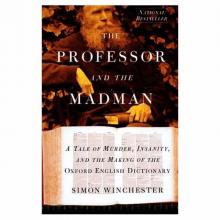 The Professor and the Madman: A Tale of Murder, Insanity
The Professor and the Madman: A Tale of Murder, Insanity A Crack in the Edge of the World
A Crack in the Edge of the World The Perfectionists: How Precision Engineers Created the Modern World
The Perfectionists: How Precision Engineers Created the Modern World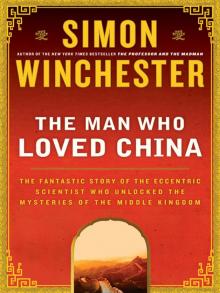 The Man Who Loved China: The Fantastic Story of the Eccentric Scientist
The Man Who Loved China: The Fantastic Story of the Eccentric Scientist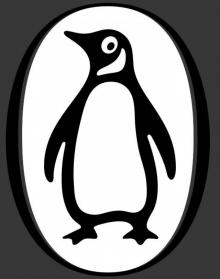 The River at the Center of the World: A Journey Up the Yangtze
The River at the Center of the World: A Journey Up the Yangtze The Fracture Zone: My Return to the Balkans
The Fracture Zone: My Return to the Balkans The Map That Changed the World
The Map That Changed the World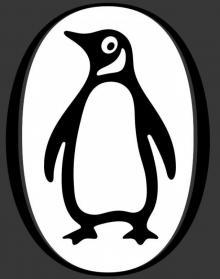 Krakatoa: The Day the World Exploded
Krakatoa: The Day the World Exploded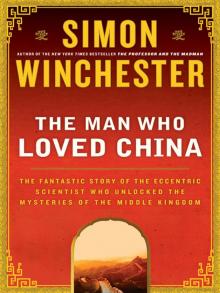 The Man Who Loved China
The Man Who Loved China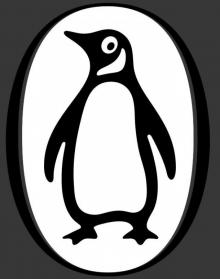 The River at the Centre of the World
The River at the Centre of the World Bomb, Book and Compass
Bomb, Book and Compass The Perfectionists
The Perfectionists The Meaning of Everything
The Meaning of Everything Exactly
Exactly Atlantic
Atlantic Korea
Korea The Fracture Zone
The Fracture Zone Pacific
Pacific Krakatoa
Krakatoa The Professor and the Madman
The Professor and the Madman Outposts
Outposts